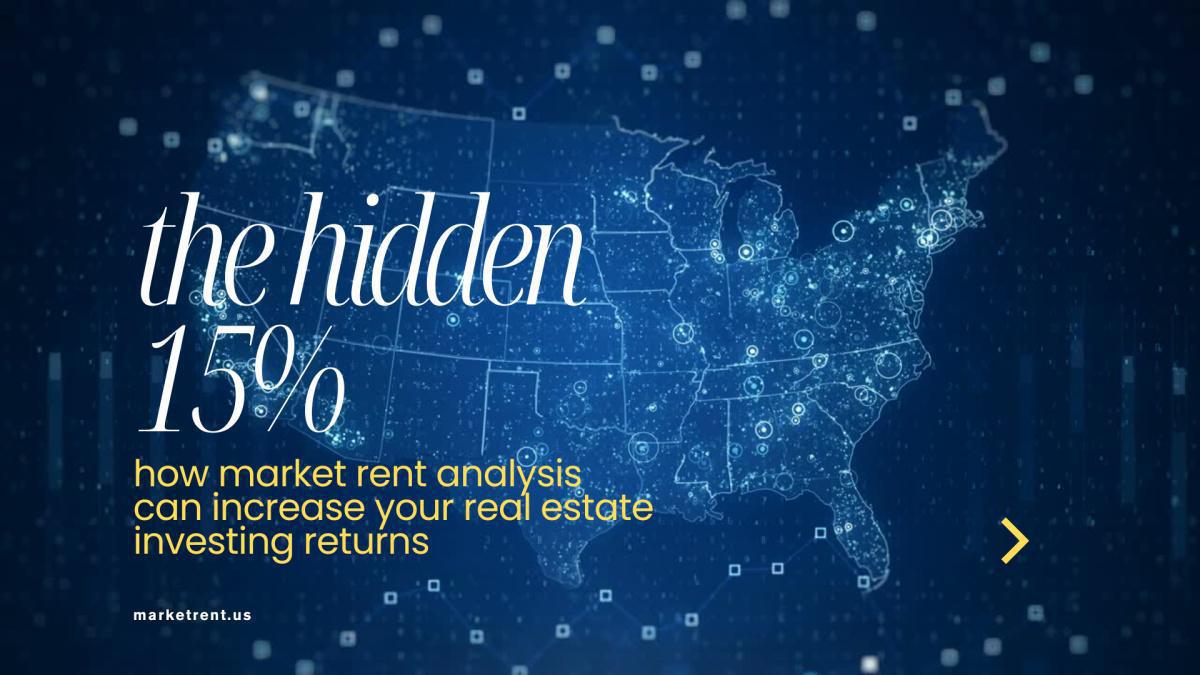Most real estate investors are unknowingly leaving 8-15% of their potential rental income on the table. This hidden revenue gap stems from intuition-based pricing methods that consistently undervalue properties compared to their true market potential. By implementing professional market rent analysis techniques, independent landlords can recapture this lost income and significantly boost their real estate investing returns.
The Cost of Intuition-Based Pricing
Four common pricing approaches dominate the independent landlord landscape, each with critical limitations:
-
Fixed Percentage Increases: Simply adding 3-5% annually ignores actual market conditions and competitive positioning.
-
Comparative Listing Approach: Scanning a few current listings provides only a snapshot view without accounting for crucial property differences.
-
Peer Consultation Method: Asking other landlords perpetuates market inefficiencies through collective underpricing.
-
Gut Feeling Approach: Relying on intuition introduces cognitive biases that consistently favor conservative pricing.
For a portfolio of just (5) properties renting at $2,000/month, these methods collectively cost real estate investors over $18,000 in annual unrealized income.
The Market Rent Analysis Advantage
Professional real estate investing tools like market rent calculators transform pricing from guesswork to science. By collecting structured data on truly comparable properties and making quantitative adjustments for feature differences, investors can precisely determine optimal pricing points.
Industry observations and market trends reveal consistently across all markets and property types: landlords using systematic market rent analysis earned 8-15% more than those using intuition-based methods, with no significant difference in vacancy rates.
Why Real Estate Investors Underprice (The Psychology)
Three powerful cognitive biases affect even experienced investors:
-
Vacancy Aversion Bias: Fear of empty units drives conservative pricing, even though data shows properly priced properties typically rent within 10-18 days.
-
Confirmation Bias in Comparable Selection: Investors unconsciously focus on properties that confirm existing price assumptions while mentally discounting higher-priced properties.
-
Status Quo Bias in Renewal Pricing: Reluctance to "rock the boat" with existing tenants results in extremely conservative increases.
The Growing Competitive Disadvantage
Institutional investors and large property management companies already leverage sophisticated market rent analysis tools, creating a widening gap between professional and intuitive pricing approaches. As real estate investing becomes increasingly data-driven, this competitive disadvantage for independent landlords will only intensify.
The Path Forward: Market Rent Analysis
The solution is straightforward: implement systematic market rent analysis techniques using purpose-built real estate investing tools.
-
Build a structured database of truly comparable properties
-
Make quantitative adjustments for feature differences
-
Account for seasonal market patterns
-
Leverage technology to streamline the process
The result is precise, optimal pricing that maximizes returns while maintaining competitive positioning in your market.
Conclusion
The hidden 15% represents a significant opportunity for real estate investors to increase returns without additional properties or capital investment. By adopting professional market rent analysis methods, independent landlords can recapture this lost revenue and maximize their investment performance.



